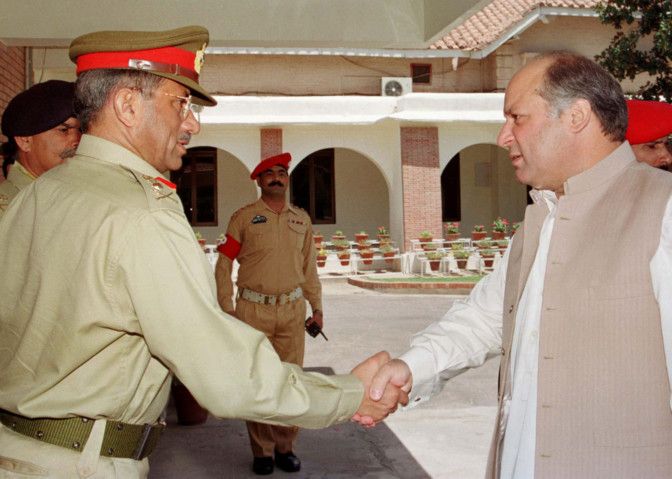This series will cover the history of Modern Pakistan, from the earliest notions of a separatist Muslim governance to the creation of Pakistan and all the way to 2023.
You can read post covering 1857 – 1927 here: A History of Modern Pakistan #1 1857 – 1927
You can read post covering 1927- 1939 here: A History of Modern Pakistan #2 1927 – 1939
You can read post covering 1939 – 1947 here: A History of Modern Pakistan #3 1939 – 1947
You can read post covering 1947 – 1953 here: A History of Modern Pakistan #4 1947 – 1953
You can read post covering 1953 – 1958 here: A History of Modern Pakistan #5 1953 – 1958
You can read post covering 1958 – 1970 here: A History of Modern Pakistan #6 1958 – 1970
You can read post covering 1970 – 1977 here: A History of Modern Pakistan #7 1970 – 19770
You can read post covering 1977 – 1988 here: A History of Modern Pakistan #8 1977 – 1988
You can read post covering 1988 – 1993 here: A History of Modern Pakistan #9 1988 – 1993
Bhutto second term as Prime Minister
As Bhutto felt unfairly dismissed previously and subject to vote rigging, she began her tenure as the “Iron Lady.” She demanded political stability and a one voice Pakistan. Alongside choosing the President, Bhutto personally approved the appointments of all four defence chiefs, Navy, Army, Air Force and Chairman of Joint Chiefs. As part of her comeback, she made an effort to improve relations with the west and Iran. In 1995, she convinced the US to repeal sanctions.
Bhutto an economist by profession, also took charge of the Ministry of Finance in her second term. She was keen to improve the country’s finances so she could deliver her promises. It was reported her plans kept getting sabotaged as many govt officials had a stake in industries and it would mean they lose out with her reforms.
She also focused on cultural development to give the Pakistanis something to be proud of and patriotic too. Bans of the music and film industries were lifted and a ban was placed on Indian media in the country.
Bhutto also made the case to advance women’s rights. Bhutto oversaw the creation of a women’s division in the government, headed by a senior female civil servant, as well as a women’s bank. She opened a series of all-female police stations, staffed with female officers, to make women feel safer in coming forward to report crimes. She established family courts with female judges to deal with child custody and family issues, as well as female judges in the Supreme Courts of Peshawar and Sindh. She joined a number of councils at an international level.
By 1996, Benazir Bhutto championed being a nation on par with India in terms of having a nuclear weapon. She also recognised the Taliban government in Afghanistan. Bhutto was looking to make friends, not enemies.
The country’s financial situation left no funds for her to pursue the desired social programs; 70% of national revenues went on paying off the national debt, while much of the other 30% went on the military. With rapidly growing inflation and higher taxes, there was growing discontent over the government.
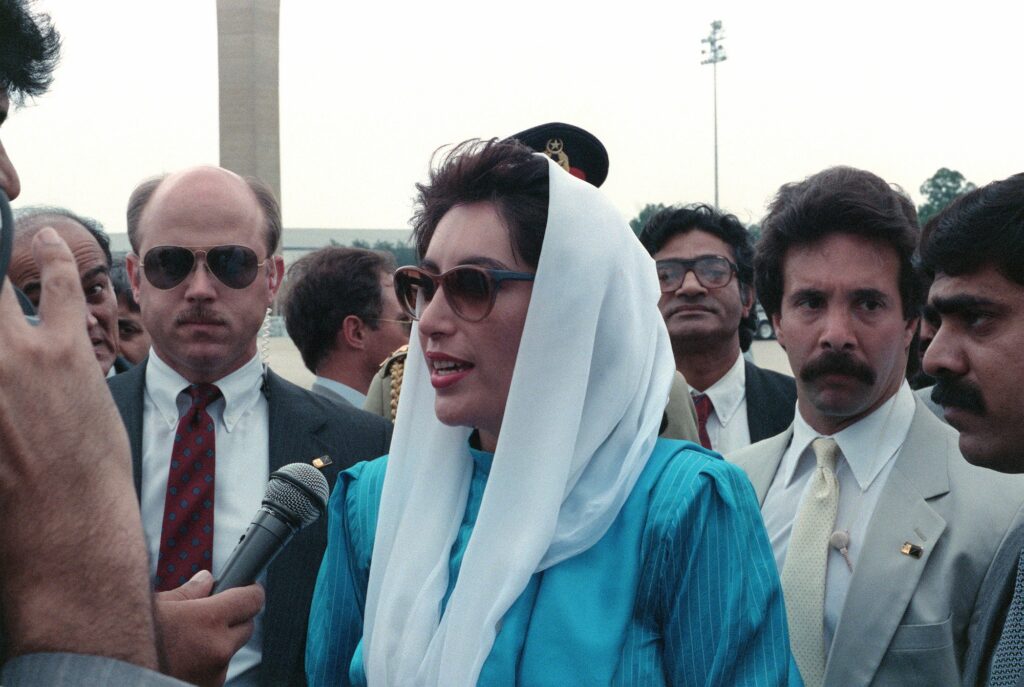
Bhutto Corruption
Over the next couple of years, it was revealed the Bhutto’s were big earners and spenders, not of their own money but from the public purse money. Zardari was the head of these scandals, one deal earned him $10m for giving a gold dealer a monopoly on gold imports alone. There was clear evidence both Bhutto and Zardari were working together. Bhutto made 24 business trips in 12 months and her and her husband’s property portfolio vastly grew. John Burns reported, by 1996, their takings through various illegal deals amounted to over $1.5 billion.
The couple would also evade tax and deposit all monies in foreign accounts.
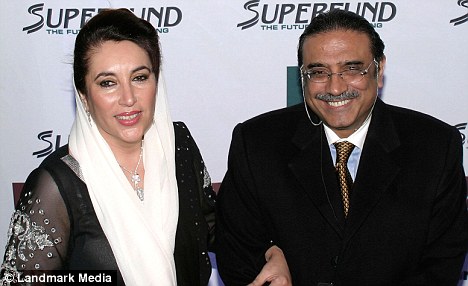
Murtaza Bhutto enters Politics
Murtaza was Benazir’s younger brother, who was in exile in Afghanistan for hijacking and terrorism during Zia regime. As dissatisfaction grew for Benazir even by her mother, a faction of the PPP began campaigning for him, often referred to as the true Heir of Bhutto. He managed to rally enough support which prompted him to return to Pakistan. He wanted to revive the legacy of his father. This did not sit well with Benazir.
When he landed, he was arrested and held for eight months in solitary confinement and then acquitted in a subsequent trial. He established his own party, the PPP (Shaheed Bhutto), in reference to the party that is the actual successor of Zulfikar Ali Bhutto and began referring to Benazir as “Begum Zardari,” in other words, someone under the thumb of her husband and his political motivations. But most of his criticism was against his brother-in-law Zardari. Everyone knew about their corruption. Murtaza even hung a picture of Zardari in his guest toilet as an act of protest.
Murtaza also formed an alliance with Nawaz Sharif to undermine the Bhutto government. However on 20 September 1996, Murtaza was ambushed by police near Karachi; they opened fire, killing him and seven others.
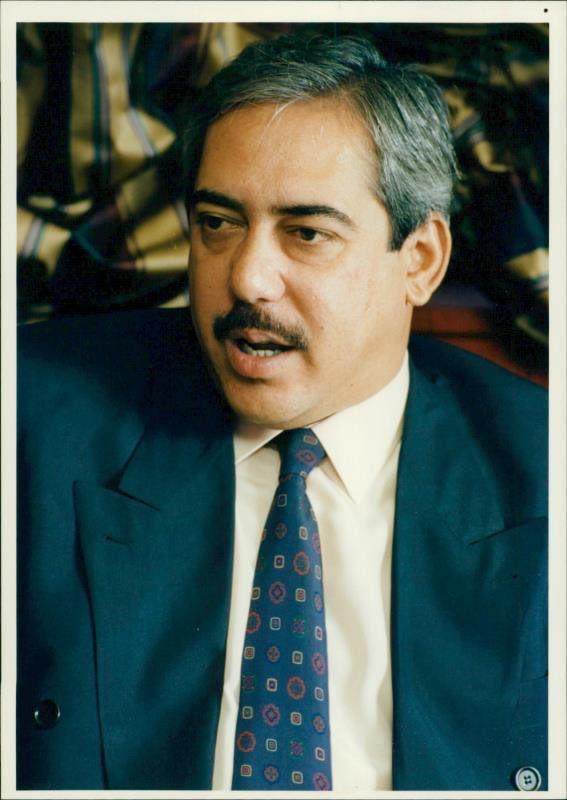
Bhutto Dismissed
During this period Leghari began stepping up to Bhutto and her corruption. He gained the support from the Army Chief and demanded Bhutto fixes the economy, curtail corruption and the murder of Murtaza is investigated. Bhutto resigned as Minister of Finances and dismissed most of her economic advisers.
Leghari was still not done as there was more reason to believe Murtaza was assassinated by the Bhutto’s. He dismissed the government and troops surrounded Bhutto’s residence and Zardari was arrested and imprisoned, charged with money laundering and involvement in Murtaza’s murder. He remained in prison until 2004.
Leghari installed a civilian caretaker government led by Malik Meraj Khalid while announcing forthcoming elections for February 1997. Bhutto challenged the constitutionality of Leghari’s decision, taking the issue to the Supreme Court, but they ruled in agreement with the president
1997 General Elections
Nawaz Sharif and his party took the lead winning with a high majority. The PPP had secured only 18 seats in the National Assembly.
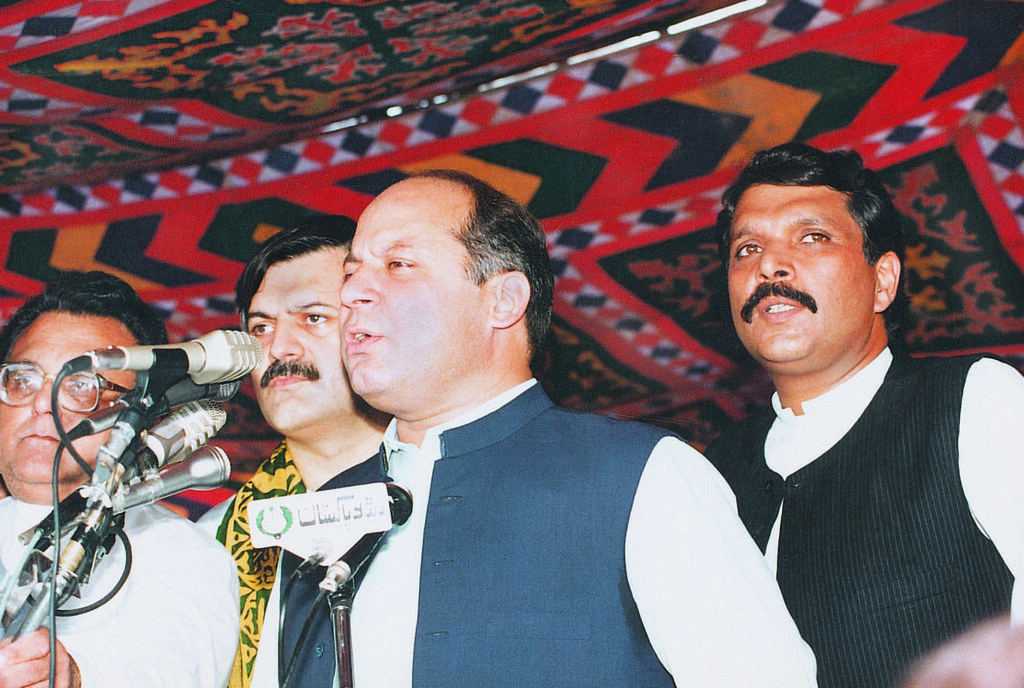
Nawaz Sharif second term as prime minister
Sharif’s first few months involved amending the constitution and, in his governance, the first nuclear weapons tests were carried out in May 1998. Bhutto urged Sharif to carry out nuclear tests on Indian soil after India did the same to Pakistan. In 2019, both countries signed the Lahore Declaration, taking into account the responsibility of the countries with its nuclear weapons and role they play in South Asia.
During his time, the M2 motorway from Islamabad to Lahore was completed, a project he initiated during his first term.
Again, Pakistan’s economic situation was still in turmoil. High inflation, high foreign debt and increasing unemployment.
Constitutional war
There was a reoccurring theme of governments being dismissed by the President so Sharif immediately worked to remove Eighth Amendment which was not taken well by Chief Justice Ali Shah. Leghari joined the Chief Justice in trying to quash Sharif, but with Sharif’s backing of the military, he managed to get Leghari to resign and have Thirteenth Amendment to the constitution passed. This reduced the president to a figure head. Ali Shah was then also ousted and Wasim Sajjad was appointed as acting president.
Following this, Sharif looked to amend the constitution again. The Fourteenth Amendment subjected Members of Parliament to very strict party discipline by giving party leaders unlimited power to dismiss legislators who failed to vote as directed. This virtually eliminated any chance of a Prime Minister of being thrown out of office by a motion of no confidence.
Although Sharif got on with the Military, the Chief of Army Staff General Jehangir Karamat advocated for a National Security Council which Nawaz interpreted as return of the military to an active political role. Sharif managed to get Karamat to resign. He promoted General Pervez Musharraf to replace Karamat.
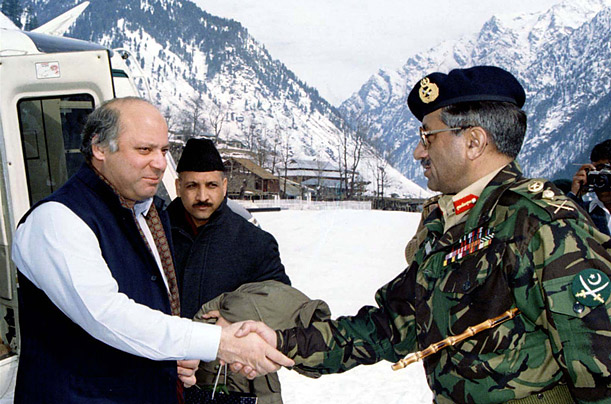
Rafiq Tarar as President
Upon becoming President, Tarar was merely ceremonial figurehead who kept a low profile, and avoided news media, and he remained a devoted servant and loyalist of the Sharif family.
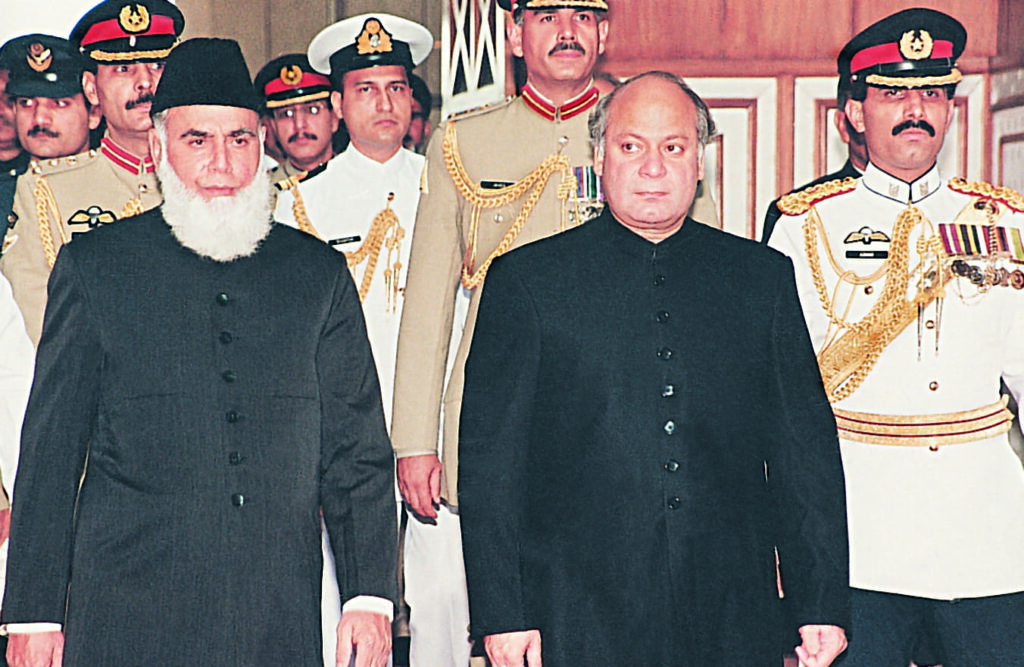
Bhutto Convicted
In April 1999, Benazir was convicted with a five years prison sentence, an $8.6 million fine, and disqualification from public office. She was in London at the time of the conviction and later relocated to Dubai under the protection of the Emirates.
1999 Kargil War
Under Musharraf’s lead Pakistan decided to take the Kargil district of Jammu and Kashmir and elsewhere along the Line of Control (LoC). Pakistan made initial gains but then the Indians managed to recapture Kargil and became the victor. Pakistan once again returned home embarrassed. Sharif claimed to have no knowledge of the plans as did Musharraf as he had only just become the Chief of Army staff.
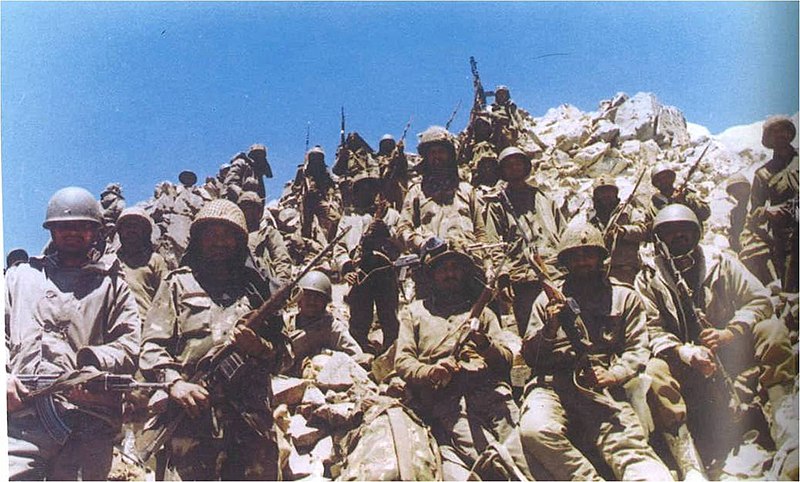
General Pervez Musharraf Coup
In October 1999 Nawaz attempted to remove Musharraf for military failures along with other armed forced chiefs. He ordered the arrest of Musharraf when he returns home from Sri Lanka, but Musharraf suspecting this got his military chiefs to Coup and arrest Sharif. Musharraf assumed control of the government as chief executive.
The military placed Nawaz on trial for “kidnapping, attempted murder, hijacking and terrorism and corruption”. In a speedy trial, the military court convicted Nawaz and gave him a life sentence. Saudi managed to negotiate Sharif’s exile to its land with the proviso he won’t participate in politics for 21 years and forfeit property worth $8m.
Musharraf gave reasons for the Coup due to destruction of institutional checks and balances, and the prevailing corruption in the political leadership. The coup was widely welcomed in Pakistan and considered legal by the Supreme Court and granted General Pervez Musharraf executive and legislative authority for three years.

